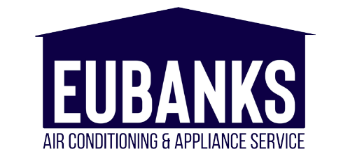29 Nov Common Furnace Problems: Restricted Flue

Furnaces rely on the close conjunction of a multitude of different components, each with its own specialized function. When a component experiences failure or becomes damaged, the furnace will often stop running. Yet in other cases, a defective component may have a more subtle effect, compromising efficiency or safety while still allowing the furnace to continue operating.
One of the most common — and potentially deadly — such problems is known as a restricted flue. Unfortunately, many homeowners fail to understand the nature of this problem. If you would like to learn more about residential furnace issues, read on. This article will introduce you to two frequent causes of a restricted flue.
Restricted Flue
A furnace flue holds the important purpose of funneling toxic exhaust gases up outside of your home. While this may seem like a simple enough job on paper, funneling gas requires very careful coordination to work properly. The key to proper functioning has to do with the relationship between the air pressure inside of the flue and the pressure of the exhaust gases.
A flue simply will not work without what is known as a negative pressure differential. This term denotes a flue pressure that is less than the exhaust gas pressure. When this state of affairs exists, the area will form a natural vacuum that sucks the exhaust up out of your home.
A restricted flue is one in which the flue pressure has become too high. High pressure will make it difficult — if not impossible — for the exhaust gases to be safely transported out of the home. The longer exhaust gas sits around inside of the flue, the greater its concentration will become. Eventually it will find ways to leak out into the air of your home, putting you and your family at grave risk.
Undersized Flue
Flue restriction often stems from an incorrectly sized flue pipe. The specific problem here involves a flue pipe that is simply too small for a particular furnace. This issue often arises in the aftermath of a furnace upgrade. If the replacement furnace happens to be more powerful, it will generate more significant levels of exhaust gas.
Should the existing flue not be upgraded to correspond to this greater output, restriction is a likely outcome. Determining the proper size of flue can be a complex undertaking. A variety of different factors must be taken into account. These include the BTU capacity, the total length of the flue, the number of bends along its length, and the connecting piece used to link the furnace and the flue together.
If you suspect that your flue may not be properly sized for your furnace, contact a professional HVAC technician to take a more serious set of measurements.
Excessive Number of Elbows
In a perfect world, a flue would be able to shoot right up from your basement, through your house, and out the roof in a single straight line. In the real world, however, this is usually not possible. As a result, most flue pipes contain numerous elbows — in other words, ninety-degree angles where the flue has to negotiate fixed structural features of your house.
Such elbows can lead to problems if not correctly accounted for. That’s because they slow down the flow rate of exhaust gases. If there are too many elbows, the gas will not evacuate quickly enough, and the pressure inside of the flue will rise, restricting gas movement.
There are three possible solutions to a restriction caused by too many elbows. The first, naturally, is to redesign the flue to contain fewer of them. The second solution involves installing a wider flue pipe. Additional width will help to prevent elbow-related restriction. Finally, an induced draft fan may be installed to provide an extra boost in moving gases along through a restricted flue.
Eliminating a restricted flue is fairly simple — provided you leave the solution to a true professional. If you suspect your furnace may be suffering from flue restriction, feel free to contact the pros at Eubanks Air Conditioning & Appliance Service.

Sorry, the comment form is closed at this time.